
St George's Hall is a building on St George's Place, opposite Lime Street railway station in the centre of Liverpool, England. Opened in 1854, it is a Neoclassical building which contains concert halls and law courts, and is recorded in the National Heritage List for England as a designated Grade I listed building. On the east side of the hall, between it and the railway station, is St George's Plateau and on the west side are St John's Gardens. The hall is included in the William Brown Street conservation area.

The Leeds Corn Exchange is a shopping mall in Leeds, West Yorkshire, England. The structure, which was commissioned as a corn exchange, is a grade I listed building.

The County Sessions House is a former courthouse in Liverpool, Merseyside, England. It stands at the bottom of Islington, to the east of the Walker Art Gallery, which now occupies the building. It is recorded in the National Heritage List for England as a designated Grade II* listed building.
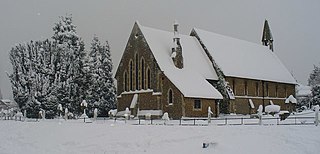
Burpham is a suburb of Guildford, a town in Surrey, England with an historic village centre. It includes George Abbot School, a parade of small shops, and the nationally recognised Sutherland Memorial Park.

The Hazlitt Theatre and Exchange Studio, also known as the Hazlitt Arts Centre, is a theatre complex in Earle Street in Maidstone, Kent, England. The oldest part of the complex, which is now used as a shopping complex on the ground floor, and as a theatre venue known as the "Exchange Studio" on the first floor, is a Grade II listed building.

Leicester Corn Exchange is a commercial building in the Market Place in Leicester, Leicestershire, England. The structure, which currently operates as a public house, is a grade II* listed building.

St John's Church is in Washington Street, Workington, Cumbria, England. It is an active Anglican parish church in the deanery of Solway, the archdeaconry of West Cumberland, and the diocese of Carlisle. The church is recorded in the National Heritage List for England as a designated Grade II* listed building. It is a Commissioners' church, having received a grant towards its construction from the Church Building Commission.

Corn exchanges are distinct buildings which were originally created as a venue for corn merchants to meet and arrange pricing with farmers for the sale of wheat, barley, and other corn crops. The word "corn" in British English denotes all cereal grains, such as wheat and barley. With the repeal of the Corn Laws in 1846, a large number of corn exchanges were built in England, particularly in the corn-growing areas of Eastern England.

Newark Town Hall is a municipal building consisting of a town hall, assembly rooms and a market hall in Newark-on-Trent, Nottinghamshire, England. It is a Grade I listed building.

Woking Civic Offices is a municipal building in Gloucester Walk, Woking, Surrey, England. It is in use as the headquarters of Woking Borough Council.

Guildford Crown Court is a Crown Court venue which deals with criminal cases in Bedford Road, Guildford, England.
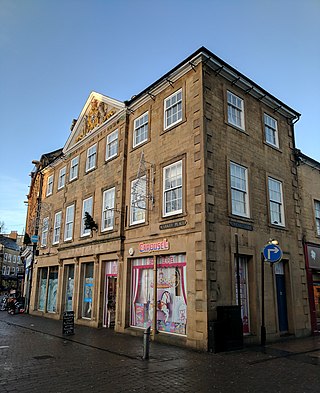
The Moot Hall is a municipal building in the Market Place in Mansfield, Nottinghamshire, England. The building, which now operates as a shop, is a Grade II listed building.
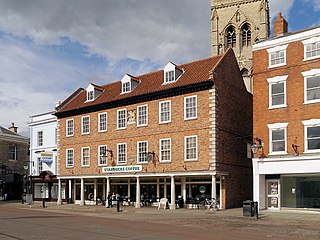
The Moot Hall is a municipal building in the Market Place in Newark-on-Trent, Nottinghamshire, England. The building, which was the main municipal building in the town in the 18th century, currently accommodates a Starbucks coffee shop.

The Corn Exchange is a commercial building in Abbeygate Street in Bury St Edmunds, Suffolk, England. The structure, which is currently used as a public house, is a Grade II listed building.

The Corn Exchange is a commercial building in the Market Place in Saffron Walden, Essex, England. The structure, which is currently used as a library, is a Grade II listed building.

The Exchange Arcade is a shopping mall in Cornhill in Lincoln, Lincolnshire, England. The structure, which was commissioned as a corn exchange, is a Grade II listed building.

The Corn Exchange is a commercial building in Tuesday Market Place, King's Lynn, Norfolk, England. The structure, which was commissioned as a corn exchange and is now used as an events venue, is a Grade II listed building.
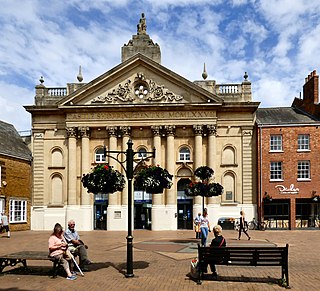
The Cornhill Corn Exchange was a commercial building in the Market Place, Banbury, Oxfordshire, England. The façade of the building, which has been preserved and now forms an entrance to a shopping centre, is a Grade II listed building.
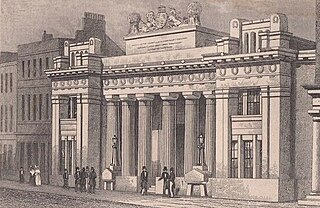
The Corn Exchange was a commercial building in Mark Lane, London, England. The original structure dated from 1747, but the exchange later amalgamated with a rival exchange and was rebuilt several times before finally closing in 1987.
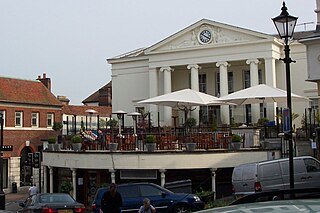
The Corn Exchange is a commercial building in the Market Square in Bishop's Stortford, Hertfordshire, England. The structure, which is currently used to accommodate shops and offices, is a Grade II listed building.





















